Medellín, Colombia 作者: 来源: 发布时间:2021-03-24
1. Population and Area
Medellín, officially the Municipality of Medellín, is the second-largest city in Colombia, after Bogotá, and the capital of the department of Antioquia. It is located in the Aburrá Valley, a central region of the Andes Mountains in South America.
Population: 2,427,129 (2018)
Area: 380.64 km2 (146.97 sq mi)
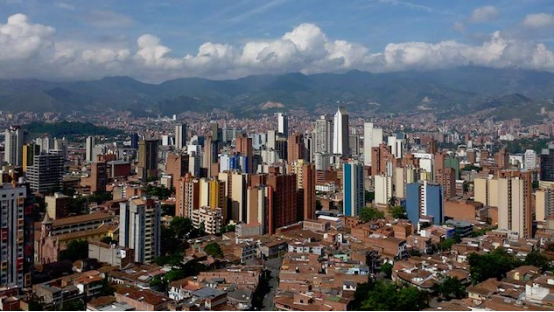
2. Geography
Medellín has 16 comunas (districts), 5 corregimientos (townships), and 271 barrios (neighborhoods). The metropolitan area of Medellín lies within the Aburrá valley at an elevation of 1,500 metres (4,900 feet) above sea level and is bisected by the Medellín River (also called Porce), which flows northward. North of the valley are the towns of Bello, Copacabana, Girardota and Barbosa. To the south of the valley lie Itagüí, Envigado, Sabaneta, La Estrella and Caldas.
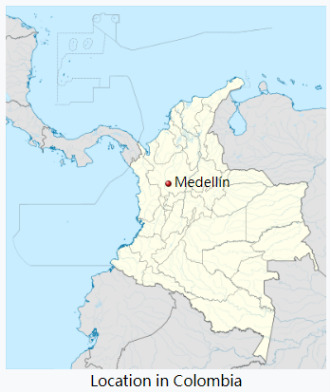
Transportation
Air transportation
Medellín has two airports, Olaya Herrera Airport (EOH), and José María Córdova Airport (MDE), which is located in the city of Rionegro, 29 kilometres (18 miles) east of the city of Medellín. In 2012 the busiest domestic flight route was between Jose Maria Cordova Airport and Bogotá while the busiest international route was between Jose Maria Cordova Airport and Panama City.
The Jose Maria Cordova Airport receives international flights from important carriers such as American Airlines, Avianca, JetBlue and Lan Airlines, which makes the city accessible from the many regions of America. Avianca, the flag air-carrier of Colombia, has also an important activity at this airport. This airport has direct flights to important international destinations such as Lima, Quito, Mexico City, Madrid, Miami and New York City.
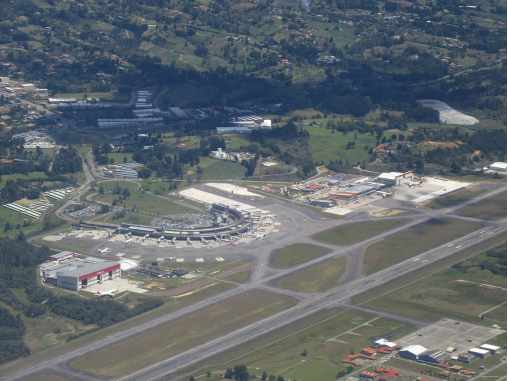
José María Córdova International Airport
Land transportation
Medellín has two transportation terminals, the North Transportation Terminal and the South Transportation Terminal. The city's public transport system includes diesel buses, taxis, tram and an urban train referred as the Medellín Metro, the only metro system in Colombia.
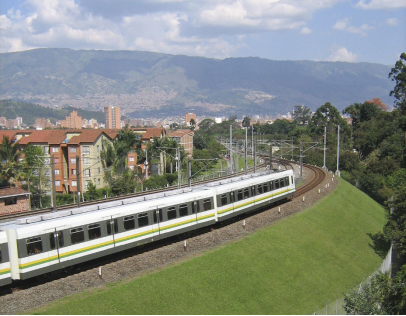
Medellín Metro, the only metro system in Colombia.
The Metro connects the city with most of its metropolitan area. It has five lines. Line A goes from Niquía to La Estrella (north to south), while Line B goes from San Antonio to San Javier (downtown to west). In addition, Line K and Line J, an air cable car, locally known as Metrocable, serve a depressed and geographically difficult area. Line K begins at Acevedo Station on Metro Line A, and continues uphill, ending at Santo Domingo Savio. Line J begins at San Javier Station on Metro Line B, and continues uphill to La Aurora. Line L does not serve communal areas, rather, it is a tourist-oriented line which is connected to Arví Park and is part of a social project to bring retreats and nature to the masses. Colombia has become Latin America's largest user of such complementary transportation service throughout the country.
In 2006, construction began on Metroplús, a bus rapid transit service with a dedicated road, much like Bogotá's TransMilenio, to allow faster transit for the service's buses. The first line opened two years later than planned in 2011 and a second in 2013. The first leg is the Troncal Medellín, which goes from the Universidad de Medellín in the west to Aranjuez in the northeast part of the city. Metroplus will help lessen the city's pollution and traffic, as many old buses will be taken out of service, while the new buses will work with natural gas.
Because of its projects on sustainable transport, the city obtained, along with San Francisco, the 2012 Sustainable Transport Award, given by the Institute for Transport and Development Policy. According to EMBARQ Director Holger Dalkmann, "Medellín pioneered the use of cable cars as a transit alternative in low-income informal settlements in hilly areas, moving 3,000 passengers per hour per direction; a real breakthrough now being replicated in Caracas and Rio de Janeiro,"
The Colombia and Latin America's second-largest and most modern tunnel, the Western Tunnel, officially named the Fernando Gomez Martinez Tunnel, is located between Medellín and Santa Fe de Antioquia. It is 4.6 km (3 mi) in length and offers security and service technologies for the users. It was inaugurated on January 20, 2006.
Originally, trams in Medellin were the most important transportation until 1950, but, after that, the rapidly increasing population and number of automobiles forcefully closed it in 1951. However, more than 60 years later, a new Translohr system (rubber-tired "tram"), the Ayacucho Tram, the first modern "tram" in Colombia, was opened on September 30, 2015. It is integrated with the metro system and the local bus network.
3. Economy
Medellín is one of Colombia's economic centers. Its economy is led by a powerful group of people from the private sector known as the Grupo Empresarial Antioqueño (Antioquian Enterprises Group). The group was formerly known as the Sindicato Antioqueño (Antioquian Union) but after being mistaken abroad for a labor union, which hampered its international growth for many years, a new formal name was chosen. This group has an aggregate market capitalization of approximately US $17 billion and employs more than 80,000 Colombians.
This group also participates in other sectors of the city industry and is an active trader in the Colombian stock exchange. Medellín serves as headquarters for many national and multinational companies.
Medellín's main economic products are steel, textiles, confections, food and beverage, agriculture (from its rural area), public services, chemical products, pharmaceuticals, refined oil, and flowers. Fashion is a major part of the economy and culture of the city. Medellín hosts Latin America's biggest fashion show, Colombiamoda.
Gross domestic product
The Medellín Metropolitan Area produces 67% of the Department of Antioquia's GDP and 11% of the economy of Colombia. Antioquia is the second-greatest economic region of Colombia. By 2005, Antioquia's GDP was more than US$14,700,000,000 and the top exporting province in Colombia. The Aburrá Valley is the top economy in the province, and its GDP was $7,800 million. Medellín is the second-largest economic region in Colombia, after Bogotá.
The 2005 Report of the Economic Colombian Review of Proexport and the International Cooperation Agency of Medellín concluded that Medellín was at the same level of GDP contribution to the national economy as cities like Panama City in Panama, and San José de Costa Rica.
4. Industries and projects
Medellín Cluster
Medellín created the first Colombian business cluster. The city is the top exporting region of the country, with 1,750 export businesses based in Medellín. The Cluster was created with the support of the Chamber of Commerce of Medellín and the City Administration for an actual total of 21,000 companies that share 40% of total exports, 25% of the regional GDP, and 40% of Metro Area employment. The main economic activities of the Medellín Cluster (MC) are in electricity generation, textile, fashion design, construction, tourism and business. One current goal of the Medellín Cluster is to include health services, an important sector in the local economy.
Comprehensive urban projects
When Sergio Fajardo became Mayor of Medellín in 2004, the "Medellín, Commitment of all the Citizens" plan for the city was enacted. One of its fundamental axes was described as "Social Urbanism". The final objective of this model was to promote peace and social equity through its urban policies. To accomplish this, priority was given to the areas of the city where bigger social and economic issues were found. The main tool used with this objective was the planning and development of urban projects that would transform the physical environment while promoting profound social and cultural shifts in the communities they were implemented.
The projects were identified and prioritized using six main guidelines as described in the City Plan by the Council of Medellín:
l The indicators of human development and quality of life will guide the public investment, focusing on first serving the ones in the biggest need.
l Public space and infrastructure must become the framework where education and culture are cultivated in places of encounter and coexistence.
l Urban projects must simultaneously integrate physical, cultural and social components; improving not only places but also the life and interactions of people in the communities.
l The Integrated Metropolitan Transport System must be used as the organizing axis of mobility and projects in the city. All projects have to be directly linked to the main transport system.
l The decision to make Medellín an educated city. Education and culture as priorities that guide programs and projects.
The main objective of these projects is to fight inequity and exclusion. The neighborhoods with the biggest inequity and violence issues are identified and important investments are made in them. There is no previous agenda over what the specific nature of the interventions will finally be since the projects use a communicative approach to define what is best for the community with the active participation of its members. The outcomes will depend on what the neighborhood decides supported by the inclusion of the expertise of city organizations. The projects will have to incorporate all the elements needed to foster development and will be executed simultaneously to assure the biggest impact.
Aside from usual city investment in public infrastructure and as a result of this approach to city development, there were four main concrete projects that were established to help achieve the objectives of peace and social equity based on the guidelines proposed in the Medellín City Plan by the Council of Medellín.
5. Tourist attractions
Botero Plaza
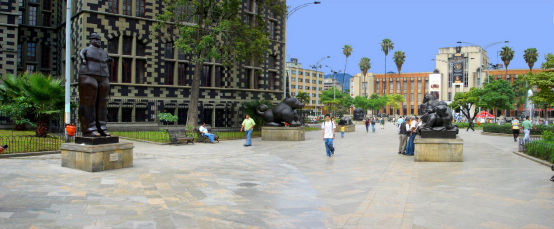
Hometown hero Fernando Botero donated 23 of his larger-than-life sculptures to the city of Medellin, and you'll find them sprinkled around the aptly named Plaza Botero (near the Parque Berrio metro station). From rotund Roman legionaries to overstuffed animals, these portly figures have become symbolic of downtown Medellin and are surely the most photographed artworks in all of Colombia. Their setting against the ornate black-and-white patterns of Rafael Uribe Uribe Palace of Culture only highlights the overall appeal.
Guatapé
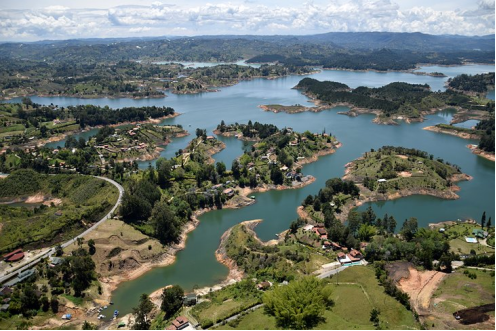
El Peñón de Guatapé is a monolithic rock formation that soars 200 meters above the surrounding landscape. Climb the 750 concrete steps to the top, and your reward is 360-degree views over the Guatapé Reservoir, a manmade lake that has numerous tentacles lined with vacation homes and hotels. The viewing platform up top has plenty of drink vendors and shaded tables to cool off at before huffing it back down to the bottom. Numerous tour operators in Medellin offer this trip daily, and many excursions include a boat trip out onto the turquoise lake to view El Peñón from afar.
Botanical Garden of Medellín
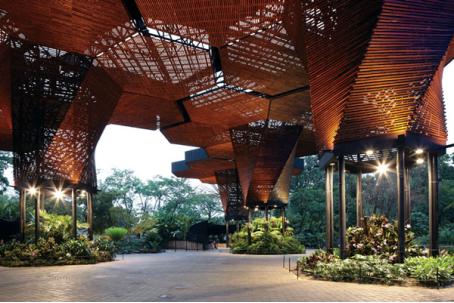
The Joaquin Antonio Uribe Botanical Garden of Medellín, more simply known as the Botanical Garden of Medellín, is a 14-hectare botanical garden in Medellín, Colombia. The botanical garden has 4,500 flowers and 139 recorded bird species. It has an important collection of orchids preserved in an architectural space called the "Orchideorama".
6. History and culture
History
Spaniards first discovered the Aburra Valley and some of it’s local inhabitants in the 1540’s. However Medellin was not founded by Spain until 1616 by Francisco de Herrera Campuzano, three quarters of a century later. Early development of Medellin began in what is modern day Poblado. It’s speculated that the early settlers of Medellin were Spanish Jews, who were fleeing from the Inquisition. Some historians believe Paisas (as the locals of Medellin are called) became so independent because of their need to find their own settlement.
Medellin’s rapid growth came much later, around the beginning of the 20th century. The railroad and the boom in the profitable cash-crop, coffee, were the main catalysts for the cities expansion. Within a few short decades Medellin had become a bustling metropolitan city.
By the 1980’s, Medellin’s history took a turn for the worse. Political instability and drug trafficking took hold of the city. The notorious drug lord Pablo Escobar began to run the city of Medellin with the power that came from his exorbitant wealth, derived from the production of the world’s cocaine supply. At the time, the city’s homicide rate was one of the highest in the world. Escobar died in 1993 and the city has returned to much safer levels. With a homicide rate of 26.1 per 100,000 residents, it's still 5 times the US average. But less than several major US cities, such as Baltimore and Detroit.
With the improved security status Medellin is now being touted as one of the top must-visit destinations by prestigious media such as National Geographic, The Guardian Newspaper and BBC news. With all this international hype Medellin is currently one of the fastest growing tourist and expatriate destinations in South America.
Culture
The culture in Medellín is strongly linked to a broader Paisa culture whose unique attributes include their Spanish accent, cuisine, and hospitality. Today, Medellín has several cultural attractions for the public including approximately 40 museums, 21 public parks, 28 theaters, and several public libraries. The city also contains several National Monuments of Colombia.
Most people in Medellín are Catholic, as reflected by Medellín's several churches and religious activities. Among the most representative churches are the Metropolitan Cathedral, the largest cathedral in the world built entirely in baked brick. There is also the Basilica of Our Lady of Candelaria, which was the official cathedral until 1931, the Church of San Ignacio, Baroque on the outside and Colonial on inside, the Church of San José, the Church of San Antonio, which has one of the biggest domes in Colombia, the Church of San José del Poblado, located in the Parque del Poblado where the first European settlement in the Aburrá Valley was founded in 1616, and the Church of Nuestra Señora de Belén. All of these temples have religious art and are located in the center of the city, which facilitates their journeys.
In December, the city is covered with thousands of fairy lights, creating the famous Alumbrados (Christmas lights), which are considered by the National Geographic as one of the ten most beautiful in the world, and which can be seen mainly on La Playa Avenue and the Medellín River.
Plaza Mayor is the epicenter of large events and business. By a decree of the municipal government, between 1980 and 1990 all developments or tall buildings necessarily included a sculpture of a famous artist. That is one reason why Medellín has the largest number of sculptures per square kilometer in Colombia.
Furthermore, the city has several festivals and exhibitions year-round. The silletero tradition is also closely tied to the region and is considered a part of Colombian cultural heritage. Since 1957, this tradition has continued in the Silleta Parade that takes place during the annual Festival of the Flowers, where silletas designed with flower arrangements are carried.
Works of many prominent artists, both local and foreign, can be seen on the streets of the city. Some artists who stand out are the masters Rodrigo Arenas Betancur and Fernando Botero.
7. Other information
The city is promoted internationally as a tourist destination and is considered a global city type "Gamma -" by GaWC.
In February 2013, the Urban Land Institute chose Medellín as the most innovative city in the world due to its recent advances in politics, education and social development. In the same year, Medellín won the Verónica Rudge Urbanism Award conferred by Harvard University to the Urban Development Enterprise, mainly due to the North-Western Integral Development Project in the city.
In 2016, Medellín won the Lee Kuan Yew World City Prize. The award seeks to recognize and celebrate efforts in furthering innovation in urban solutions and sustainable urban development.
8. Contact Information
Mayor: Daniel Quintero
Website: www.medellin.gov.co
Facebook: @AlcaldiadeMed
Tel: +5744444144
Email: notimedellin.oralidad@medellin.gov.co
Office address: Calle 44 N 52, 165 Centro Administrativo La Alpujarra, Medellín, Colombia.
